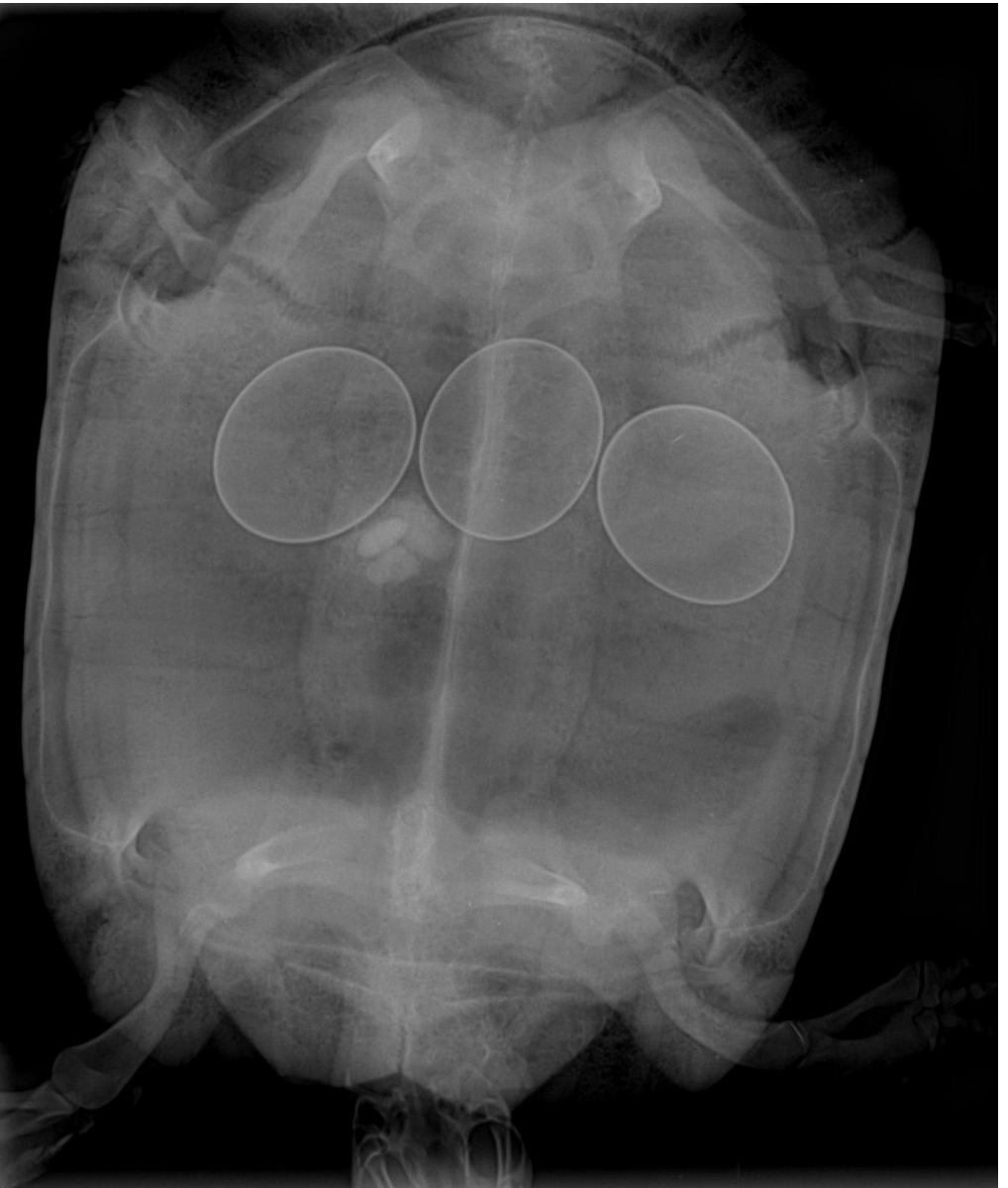Multi-systemic: Dystocia
Etiology
Dystocia in chelonians, commonly known as egg-binding, can result from multiple factors:
Obstructive Causes: Pelvic deformities, abnormal egg shape or size, and reproductive tract obstructions.
Non-obstructive Causes: Nutritional deficiencies, inadequate environmental conditions (e.g., temperature, humidity), and lack of appropriate nesting sites. Other factors include dehydration, obesity, hypocalcemia, and systemic illnesses.
Signalment
Dystocia can occur in any chelonian species, but it is most commonly observed in:
Pet turtles and tortoises: Especially those kept in suboptimal conditions.
Wild populations: Particularly those in fragmented or degraded habitats.
Signalment includes gravid females of reproductive age, typically ranging from juvenile maturity to mid-life.
Transmission
Dystocia is not a transmissible condition. However, underlying systemic illnesses that contribute to dystocia can sometimes be infectious in nature (e.g., respiratory infections).
Clinical Signs
Chelonians with dystocia may exhibit a variety of clinical signs, including:
Restlessness and frequent attempts to dig or nest.
Lethargy and decreased appetite.
Swelling of the hind limbs due to retained eggs.
Straining or cloacal prolapse.
Depression and signs of systemic illness if secondary complications arise.
Diagnosis
Diagnosis involves a combination of history, physical examination, and diagnostic imaging:
History: Information about the chelonian's diet, habitat, breeding history, and any prior episodes of dystocia.
Physical Examination: Palpation to detect retained eggs and assessment of overall health.
Diagnostic Imaging: Radiography is the gold standard for visualizing retained eggs. Ultrasound can also be useful in certain cases.
Photo credit: Uwe Gille (Creative Commons)
Treatment
Treatment of dystocia depends on the underlying cause and the severity of the condition:
Supportive Care: Includes rehydration, nutritional support, and correction of environmental deficiencies.
Medical Management: Administration of oxytocin or calcium gluconate to stimulate egg-laying, if no obstructive cause is present.
Surgical Intervention: Required for obstructive dystocia, involving procedures like cloacal manipulation or coeliotomy (surgical removal of eggs).
Analgesia and Antibiotics: To manage pain and prevent secondary infections.
Prevention
Preventative measures focus on optimal husbandry and environmental conditions:
Proper Nutrition: Ensuring a balanced diet with adequate calcium and vitamins.
Environmental Control: Maintaining appropriate temperature and humidity levels, and providing suitable nesting sites.
Regular Health Checks: Routine veterinary examinations to monitor reproductive health and early detection of potential issues.
Prognosis
The prognosis for chelonians with dystocia varies:
Favorable Prognosis: In cases where dystocia is promptly recognized and appropriately managed, especially if no complications arise.
Guarded Prognosis: If there are secondary infections, significant systemic illness, or complications from surgical intervention.


